 "ttyymmnn" (ttyymmnn)
"ttyymmnn" (ttyymmnn)
07/15/2016 at 12:35 • Filed to: planelopnik, planelopnik history
 11
11
 18
18
 "ttyymmnn" (ttyymmnn)
"ttyymmnn" (ttyymmnn)
07/15/2016 at 12:35 • Filed to: planelopnik, planelopnik history |  11 11
|  18 18 |
Welcome to This Date in Aviation History , getting of you caught up on milestones, important historical events and people in aviation from July 13 - July 15.
!!! UNKNOWN CONTENT TYPE !!!
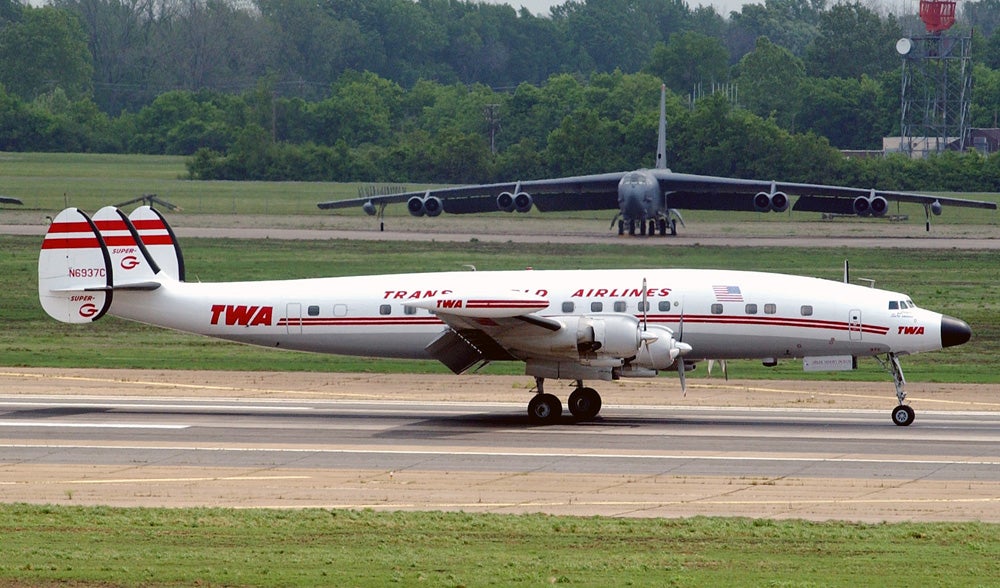
July 14, 1951 – The first flight of the Lockheed L-1049 Super Constellation.
The story of aviation is often as much about evolution as revolution. It’s relatively common for an aircraft that is designed for a single purpose to be developed to fulfill a different role, or a successful design will receive variants to enhance performance or capacity. Such is the story of the Super Constellation, which began with the first flight of its
!!!error: Indecipherable SUB-paragraph formatting!!!
forebear in 1943. The Constellation, nicknamed “Connie,” and arguably one of the most graceful aircraft ever to take to the skies, started life as a much more plain Jane aircraft, the
!!!error: Indecipherable SUB-paragraph formatting!!!
, a run of the mill, four-engine transport that would never enter production. In 1939, the eccentric billionaire
!!!error: Indecipherable SUB-paragraph formatting!!!
, owner of Transcontinental & Western Airlines (which would become
!!!error: Indecipherable SUB-paragraph formatting!!!
), held a meeting with
!!!error: Indecipherable SUB-paragraph formatting!!!
, the president of T&WA, along with other Lockheed executives. Among those present was
!!!error: Indecipherable SUB-paragraph formatting!!!
, who was destined to become one of America’s greatest aviation engineers. Hughes felt that the Excalibur wouldn’t meet his needs, and he wanted something entirely new. So the Lockheed engineers went back to the drawing board, and just three weeks later they presented Hughes with the initial plans for the Connie, now designated L-049. The new airliner, powered by a quartet of
!!!error: Indecipherable SUB-paragraph formatting!!!
radial engines, would be the most expensive aircraft produced to date, and Hughes himself funded the purchase of 40 aircraft since T&WA didn’t have the funds to pay for them. The first Connies were pressed into military transport service as the
!!!error: Indecipherable SUB-paragraph formatting!!!
, but production turned to the civilian market after WWII and had a successful airline career with 865 being built. But as flying became more popular, airlines needed bigger planes. And Lockheed’s competitors were making strides of their own. In 1950, Lockheed’s competitor,
!!!error: Indecipherable SUB-paragraph formatting!!!
, came out with the
!!!error: Indecipherable SUB-paragraph formatting!!!
, a stretched cargo version of its successful airliner, and were soon to launch the passenger version, the DC-6B, which carried 23 more passengers than the Connie. Lockheed had looked into a stretched Constellation, but decided not to build it at the time. Douglas’ move, though, forced their hand. Lockheed repurchased the prototype XC-69 Constellation from Hughes Tool Company and lengthened the fuselage by 18 feet, and the newly christened Super Connie would eventually accommodate up to 106 passengers. Continued development of the Super Connie saw the addition of more powerful
!!!error: Indecipherable SUB-paragraph formatting!!!
18-cyliner engines, and while the L-1049, even with the addition of wingtip fuel tanks, still lacked the range of the DC-6B, it was capable of carrying a larger payload. Other improvements included strengthened wings and increased cabin soundproofing. A total of 259 of the commercial version were built, and the Super Constellation also saw service with the US Air Force, who flew 320 aircraft that had been converted to the
!!!error: Indecipherable SUB-paragraph formatting!!!
electronic surveillance platform. Most of the Super Connies were retired with the advent of jet transports such as the
!!!error: Indecipherable SUB-paragraph formatting!!!
and
!!!error: Indecipherable SUB-paragraph formatting!!!
, and the last commercial flight of the L-1049 was made by Dominican Airlines in 1993. The last military variant was retired in 1982.
(US Air Force photo)
!!! UNKNOWN CONTENT TYPE !!!
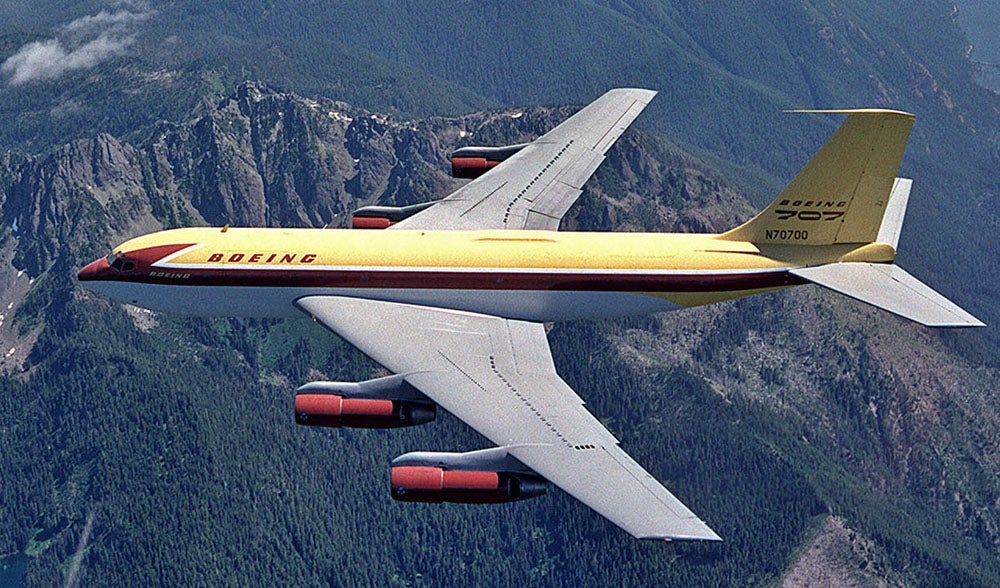
July 15, 1954 – The first flight of the Boeing Dash 80. By the end of WWII, the turbojet engine had become the power plant of the future of aviation. But not everybody was convinced. After all, technological developments in large piston-powered aircraft during the war had made them relatively safe and reliable, and airlines were reluctant to try something new when what they had was working just fine. The first step towards commercial jet aviation was taken by !!!error: Indecipherable SUB-paragraph formatting!!! with their !!!error: Indecipherable SUB-paragraph formatting!!! airliner, which first flew in 1949. And though the Comet eventually found a measure of success, it was very much a product of an earlier era, with wings that were swept only on the leading edge, and four engines that were housed in the wing roots. But Boeing was already looking to the future. Two years before the first flight of the Comet, they had produced the !!!error: Indecipherable SUB-paragraph formatting!!! bomber for the US Air Force. Taking data on !!!error: Indecipherable SUB-paragraph formatting!!! that had been captured in Germany during the war, Boeing gave their new bomber a completely swept wing, and placed its engines in pods suspended beneath the wing. In the process, they had set the standard for basic airliner design that remains to this day. And it was the Stratojet that would inspire Boeing’s foray into the jet airliner business. The international airliner market was still saturated with piston planes, particularly those by !!!error: Indecipherable SUB-paragraph formatting!!! . And none of the airlines was willing to buy into an untested airplane. So Boeing figured that the only way to prove that their airliner concept would work was to build and fly one. Boeing president !!!error: Indecipherable SUB-paragraph formatting!!! took a huge gamble, and invested $16 million of the company’s money into the development of a prototype airliner that they hoped would satisfy the needs of both the airlines and the US Air Force, who was looking for a jet-powered aerial tanker to keep their new jet fighters in the air. Following just two years of development, Boeing rolled out the Model 367-80, or “Dash 80,” from their Renton, Washington factory on May 15, 1954. Unlike passenger airliners, the Dash 80 had large cargo doors and very few windows, but that is understandable, considering Boeing was pitching it to the Air Force first. And just one week after the first flight, the Air Force ordered 29, designating the tanker the !!!error: Indecipherable SUB-paragraph formatting!!! . But Boeing still needed to convince the airlines that they had a winner on their hands. In 1955, Boeing president Bill Allen invited airline executives to Seattle’s Seafair festival to get a look at the Dash 80. In what has become a legendary stunt, Boeing test pilot !!!error: Indecipherable SUB-paragraph formatting!!! , who was supposed to do a simple fly by, instead performed a barrel roll in the Dash 80. He later told Allen that he was just “selling airplanes.”
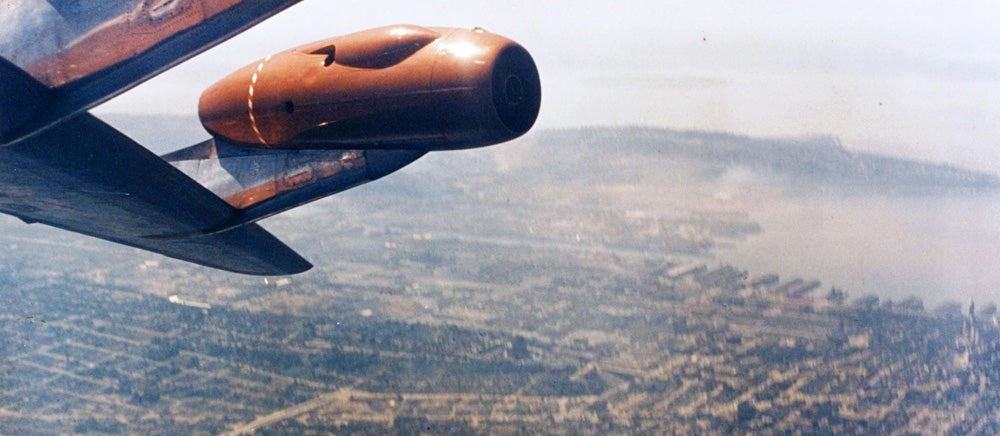
Tex Johnston rolls the Dash 80 (Boeing photo)
But the move paid off, and Pan Am kicked off the new airliner’s success by ordering 20 (though they hedged their bets by also ordering 25
!!!error: Indecipherable SUB-paragraph formatting!!!
). Two years later, the
!!!error: Indecipherable SUB-paragraph formatting!!!
took its maiden flight. The 707 was longer than the Dash 80 and KC-135, and the fuselage was widened to allow five-abreast seating. This would eventually grow to six-across. Boeing truly had a runaway hit on their hands, eventually building just over 800 KC-135s and just over 1,000 707s. Only one Dash 80 was ever built, and after production of the tanker and airliner began, the Dash 80 was used as a platform for testing components of the upcoming
!!!error: Indecipherable SUB-paragraph formatting!!!
tri-jet. After its retirement in 1970, Boeing donated the Dash 80 to the
!!!error: Indecipherable SUB-paragraph formatting!!!
in 1972, and it sat at the aircraft
!!!error: Indecipherable SUB-paragraph formatting!!!
at
!!!error: Indecipherable SUB-paragraph formatting!!!
in Arizona for 18 years. But such a historic aircraft deserved, and got, a much better fate, and it was finally restored by Boeing in 1990 and flown to Washington, DC, where it was enshrined in 2003 at the Smithsonian’s
!!!error: Indecipherable SUB-paragraph formatting!!!
.
(Boeing photo via
!!!error: Indecipherable SUB-paragraph formatting!!!
)
!!! UNKNOWN CONTENT TYPE !!!
Short Take Off
!!! UNKNOWN CONTENT TYPE !!!
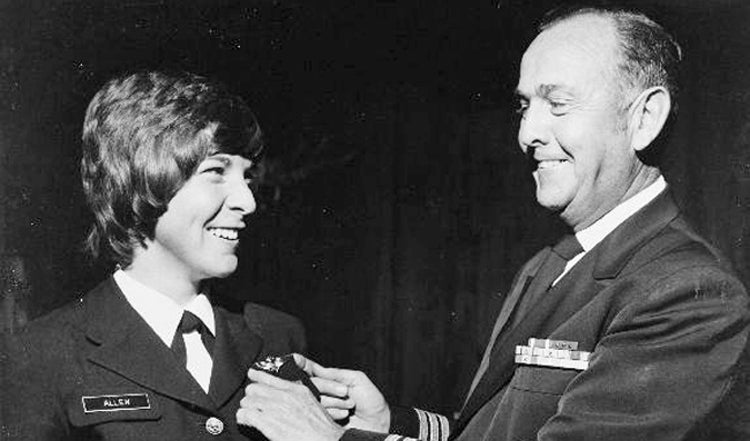
July 13, 1982 – The death of LCDR Barbara Allen Rainey. Born on August 20, 1948, Rainey was the first female aviator in the history of the US military, receiving her Wings of Gold as a Naval Aviator in 1974. She was also the first woman qualified as a military jet pilot. After retiring from active duty, Rainey joined the Naval Reserves, then returned to active duty as an instructor flying the !!!error: Indecipherable SUB-paragraph formatting!!! . She and a student were killed in a training crash while practicing touch-and-go landings. Due to the extensive damage to the aircraft, the cause of the crash could not be determined. Rainey was 33 years old. (Photo author unknown)
!!! UNKNOWN CONTENT TYPE !!!
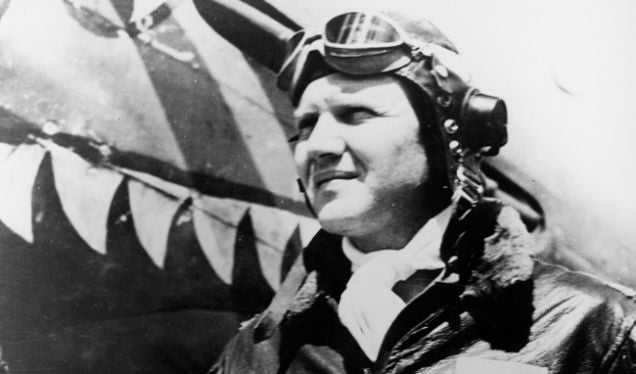
July 13, 1915 – The birth of David Lee “Tex” Hill, an American pilot who fought in WWII for Nationalist China as part of the !!!error: Indecipherable SUB-paragraph formatting!!! , better known as the !!!error: Indecipherable SUB-paragraph formatting!!! . Hill earned his wings with the US Navy in 1930, but was recruited in 1941 to join the AVG under the command of !!!error: Indecipherable SUB-paragraph formatting!!! . After the deactivation of the Flying Tigers in 1942, Hill continued serving with the US Army Air Forces fighting in the Pacific, later commanding the !!!error: Indecipherable SUB-paragraph formatting!!! and flying the Air Force’s early jet fighters. After retiring from active duty, Hill served with the Texas Air National Guard and fought in the Korean War, retiring at the rank of Brigadier General. Hill died on October 11, 2007 at the age of 92. (US Army photo)
!!! UNKNOWN CONTENT TYPE !!!
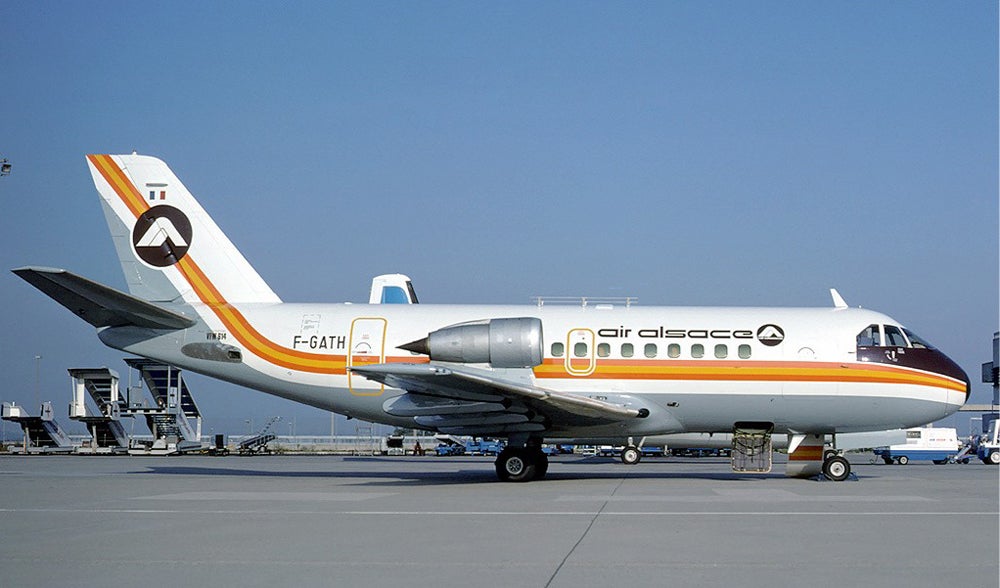
July 14, 1971 – The first flight of the VFW-Fokker 614,
a twin-engined medium-range jetliner designed and built in West Germany as a replacement for the
!!!error: Indecipherable SUB-paragraph formatting!!!
and notable for the placement of its two engines in pods above the wings. The location of the two
!!!error: Indecipherable SUB-paragraph formatting!!!
turbofan engines avoided the added structural weight of attaching them to the rear fuselage, and also helped eliminate the possibility of ingestion of debris common in underwing mountings. Due to cost and development delays, only a handful were produced before the project was canceled in 1977. Unfinished aircraft were broken up, and the remainder were bought back by the manufacturer.
(Photo by Eduard Marmet via
!!!error: Indecipherable SUB-paragraph formatting!!!
)
!!! UNKNOWN CONTENT TYPE !!!
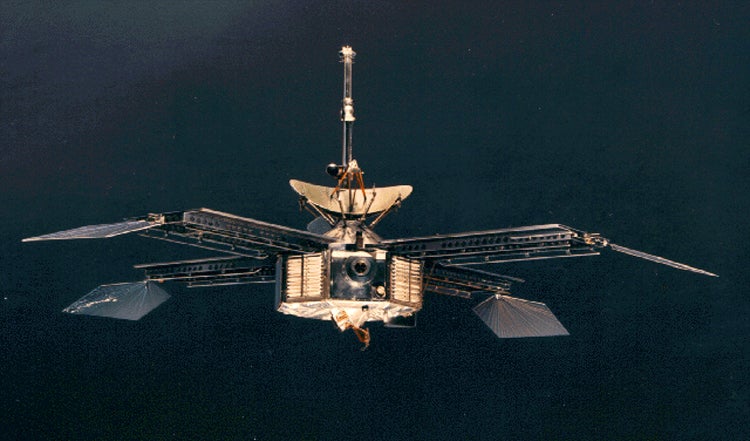
July 14, 1965 – Mariner 4 flies by Mars. Mariner 4 was part of NASA’s !!!error: Indecipherable SUB-paragraph formatting!!! to explore planets in the Solar System by flying by and returning photographs and making scientific observations. Mariner 4 was launched from !!!error: Indecipherable SUB-paragraph formatting!!! on November 28, 1964 and, upon its arrival, it sent back the first images ever returned from deep space, and the views of a cratered, seemingly lifeless world changed many scientific opinions previously held about the Red Planet. Mariner 4 collected data for two days as it flew past Mars, and remains in its heliocentric orbit following termination of communications on December 21, 1967. (NASA photo)
!!! UNKNOWN CONTENT TYPE !!!
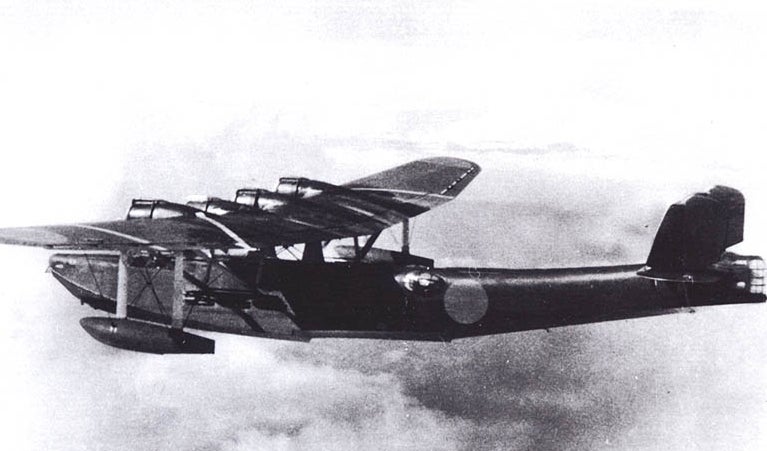
July 14, 1936 – The first flight of the Kawanishi H6K, a maritime patrol flying boat built for the Japanese Navy. Influenced by the work of the !!!error: Indecipherable SUB-paragraph formatting!!! in Ireland and the earlier !!!error: Indecipherable SUB-paragraph formatting!!! , itself a license-built and enlarged version of the !!!error: Indecipherable SUB-paragraph formatting!!! , the H6K entered service in 1938 and saw service in the !!!error: Indecipherable SUB-paragraph formatting!!! and WWII. Though vulnerable to modern fighters in use by the Allies during WWII, the H6K remained in service until the Japanese surrender in 1945, though it was eventually replaced in front line service by the more modern !!!error: Indecipherable SUB-paragraph formatting!!! . A total of 215 were produced. (Photo author unknown)
!!! UNKNOWN CONTENT TYPE !!!
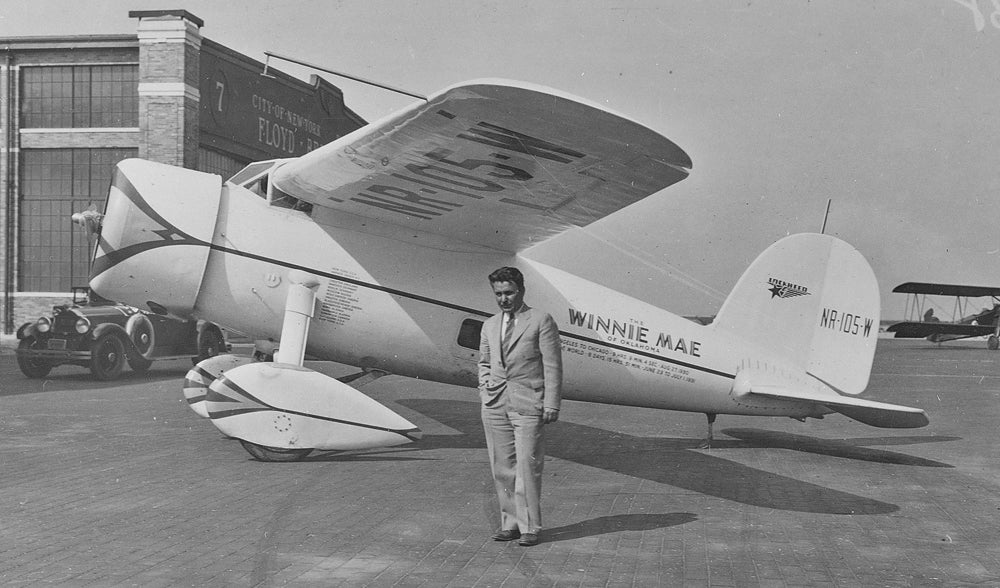
July 14, 1933 – Wiley Post departs on the first solo circumnavigation of the globe. Post had previously made a trip around the world in 1931 with navigator !!!error: Indecipherable SUB-paragraph formatting!!! , finishing the trip in 8 days and beating the previous record of 21 days held by the airship !!!error: Indecipherable SUB-paragraph formatting!!! (LZ 127). For his second flight, Post set off alone from !!!error: Indecipherable SUB-paragraph formatting!!! , again in his !!!error: Indecipherable SUB-paragraph formatting!!! Winnie Mae and, using an autopilot and compass in place of a navigator, completed the journey in just over 7 days, breaking his own record. Post was greeted in New York by a throng of 50,000 people, and his Winnie Mae now resides in the Smithsonian’s !!!error: Indecipherable SUB-paragraph formatting!!! in northern Virginia. (Photo by Rudy Arnold)
!!! UNKNOWN CONTENT TYPE !!!
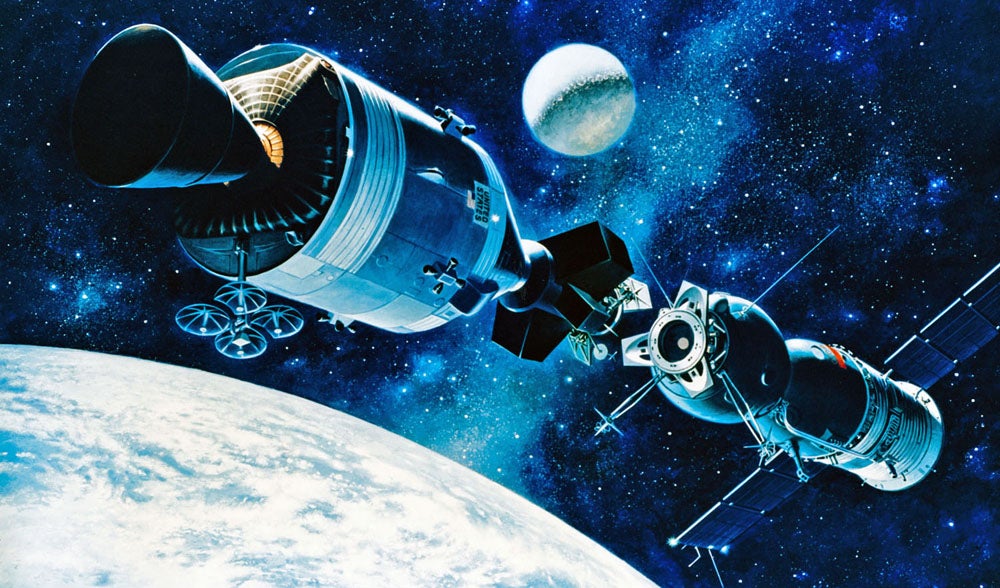
July 15, 1975 – The launch of the Apollo-Soyuz Test Project.
As a symbol of the policy of
!!!error: Indecipherable SUB-paragraph formatting!!!
pursued by the US and the Soviet Union which began in 1969, the Test Project was the first joint space program initiated by the two
!!!error: Indecipherable SUB-paragraph formatting!!!
enemies. Both the
!!!error: Indecipherable SUB-paragraph formatting!!!
and
!!!error: Indecipherable SUB-paragraph formatting!!!
capsules launched on the same date and rendezvoused in space, with the three astronauts and two cosmonauts joining hands and passing between the two docked spacecraftt, and carrying out joint scientific experiments. The ships remained docked for 44 hours before separating and returning safely to Earth.
(NASA illustration)
!!! UNKNOWN CONTENT TYPE !!!
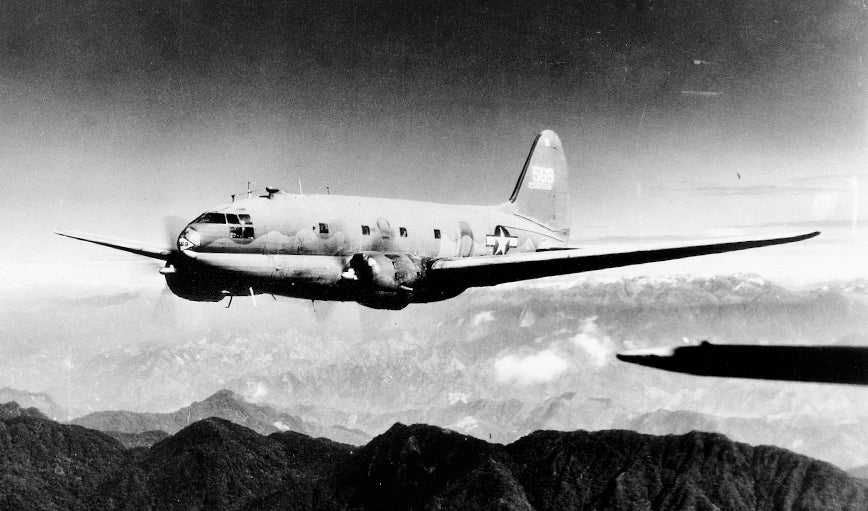
July 15, 1942 – The US flies its first supply mission from India to China over the Himalayas.
In the early days of the fight against Japanese expansion in the Pacific, the only way to resupply Chinese and American troops fighting in China was by flying over the eastern
!!!error: Indecipherable SUB-paragraph formatting!!!
, referred to pilots as “The Hump.” The dangerous and arduous supply missions, flown first by
!!!error: Indecipherable SUB-paragraph formatting!!!
and later by the untested
!!!error: Indecipherable SUB-paragraph formatting!!!
, eventually ferried 650,000 tons of supplies against the loss of 594 aircraft and nearly 1,700 personnel.
(US Air Force photo)
!!! UNKNOWN CONTENT TYPE !!!
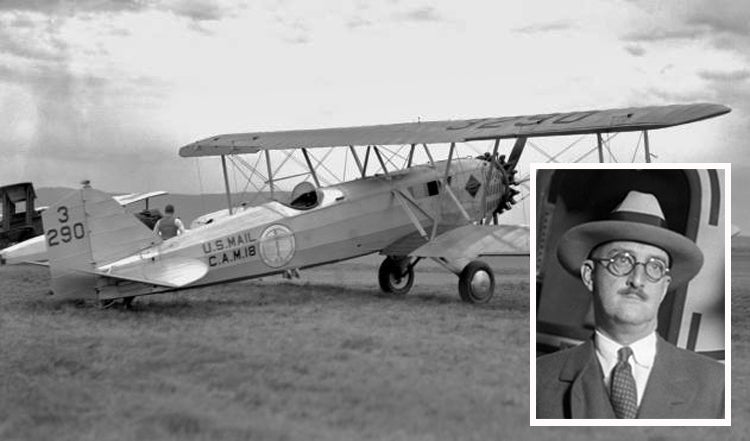
July 15, 1916 – William Boeing founds the Pacific Aero Products Company, the forerunner of the Boeing Airplane Company . After finding success in the lumber industry, Boeing turned his attention to aircraft, going into business with !!!error: Indecipherable SUB-paragraph formatting!!! to found the Pacific Aero Products Group and building their first aircraft, the !!!error: Indecipherable SUB-paragraph formatting!!! . With America’s entry into WWI, Boeing changed the name to Boeing Airplane Company and built 50 airplanes for the US Navy. Following the war, Boeing concentrated on commercial aircraft, and built an airmail operation that eventually became United Airlines. William Boeing left the company in 1937, but Boeing would go on to become one of the biggest manufacturers of civilian and military aircraft in the world. (Boeing photo via Los Angeles Times; Model 40 photo author unknown via !!!error: Indecipherable SUB-paragraph formatting!!! )
!!! UNKNOWN CONTENT TYPE !!!
Recent Aviation History Posts
!!! UNKNOWN CONTENT TYPE !!!
!!! UNKNOWN CONTENT TYPE !!!
!!! UNKNOWN CONTENT TYPE !!!
!!! UNKNOWN CONTENT TYPE !!!
If you enjoy these Aviation History posts, please let me know in the comments. And if you missed any of the past articles, you can find them all at !!!error: Indecipherable SUB-paragraph formatting!!! .
!!! UNKNOWN CONTENT TYPE !!!
 MonkeePuzzle
> ttyymmnn
MonkeePuzzle
> ttyymmnn
07/15/2016 at 12:41 |
|

lol! what!?
engine on upsidedown, body length is just all wrong.
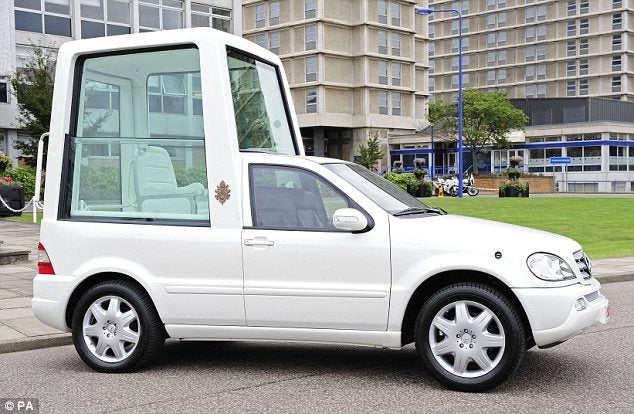
and is that a popemobile thing on top!?
 ttyymmnn
> MonkeePuzzle
ttyymmnn
> MonkeePuzzle
07/15/2016 at 12:43 |
|
What’s old is new again.
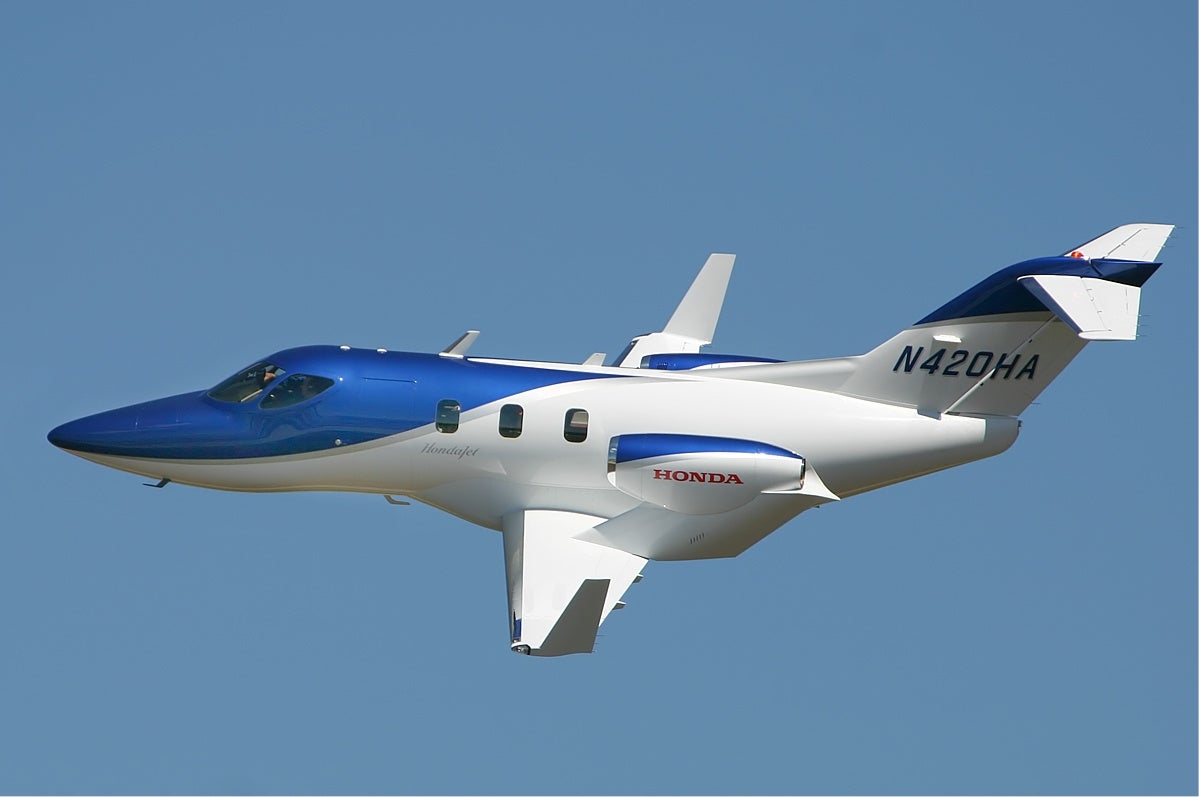

 MonkeePuzzle
> ttyymmnn
MonkeePuzzle
> ttyymmnn
07/15/2016 at 12:54 |
|
pfft, doesn’t even have a popemobile glass room on top!
 MrDakka
> MonkeePuzzle
MrDakka
> MonkeePuzzle
07/15/2016 at 13:06 |
|
AFAIK there’s no real aeronautical reason why the engine can’t be mounted above the wing. Apparently the Fokker used this configuration to reduce FOD likelihood.
 Smallbear wants a modern Syclone, local Maple Leafs spammer
> ttyymmnn
Smallbear wants a modern Syclone, local Maple Leafs spammer
> ttyymmnn
07/15/2016 at 13:14 |
|
Re the 707:
It’s interesting to note that though the Boeing designers picked up on the Comet’s tragic skin fatigue issue as well, the thing that appeared most “wrong” to them was the engine placement. How smart a move in not locating them in the wings can be appreciated when you read about Pan Am Flight 843 losing an engine over the Pacific and reaching Travis AFB safely... that wouldn’t have happened in a Comet.
As far as becoming a success, it very nearly did not. That initial order by PanAm was nearly the beginning of the end for Boeing. Bear in mind, at this point the 707 was at least a proven prototype, and the DC-8 didn’t even exist . It was just a set of plans calculated to capitalize on the shortfalls of the Dash-80. Straight out of the mouth of Juan Trippe, the only reason PanAm bought any 707's at all was because they could be ready sooner than the DC-8. The only thing that saved the 707 was being flexible and altering their design, not just lengthening and widening it to match the DC-8, but by offering several variants, even if they were only being sold to one airline. Douglas had no such alternative. The DC-8 was already a rush job, and had consumed most of the capital Douglas could afford to throw at it.
Re the Fokker:
WHY HAVEN’T I HEARD OF THIS I NEED TO KNOW EVERYTHING ABOUT IT
Very interesting design... trust the Germans.
 ttyymmnn
> Smallbear wants a modern Syclone, local Maple Leafs spammer
ttyymmnn
> Smallbear wants a modern Syclone, local Maple Leafs spammer
07/15/2016 at 13:17 |
|
Thanks, as always, for the added details. As for the Fokker, I have been shying away of late from writing about just interesting aircraft and limiting myself to more important aircraft. The posts have gotten almost too long, and I spend too much time writing! But I wanted to include that one because it was just too cool to leave out.
 Smallbear wants a modern Syclone, local Maple Leafs spammer
> ttyymmnn
Smallbear wants a modern Syclone, local Maple Leafs spammer
> ttyymmnn
07/15/2016 at 13:24 |
|
Agreed, I’m glad you put it in.
 ttyymmnn
> MonkeePuzzle
ttyymmnn
> MonkeePuzzle
07/15/2016 at 13:50 |
|
Sorry, missed the bit about the Popemobile. No, that’s the vertical stabilizer of the plane behind.
 Cé hé sin
> Smallbear wants a modern Syclone, local Maple Leafs spammer
Cé hé sin
> Smallbear wants a modern Syclone, local Maple Leafs spammer
07/15/2016 at 14:10 |
|
Not just a Fokker - the VFW part of the joint venture included Focke-Wulf, a famous name once.
The last one was retired only in 2012.
 Smallbear wants a modern Syclone, local Maple Leafs spammer
> Cé hé sin
Smallbear wants a modern Syclone, local Maple Leafs spammer
> Cé hé sin
07/15/2016 at 14:12 |
|
Is Focke-Wulf still around? My aviation knowledge peaks around 1943
 Cé hé sin
> Smallbear wants a modern Syclone, local Maple Leafs spammer
Cé hé sin
> Smallbear wants a modern Syclone, local Maple Leafs spammer
07/15/2016 at 14:15 |
|
They were subsumed into Airbus following a series of mergers.
Messerschmitt became MBB became part of Eurocopter became Airbus Helicopters.
 RallyWrench
> ttyymmnn
RallyWrench
> ttyymmnn
07/15/2016 at 14:29 |
|
Highly informative as always, thanks. I wonder how many of those wrecked aircraft in the Himalayas have been found, what a crazy number.
 ttyymmnn
> RallyWrench
ttyymmnn
> RallyWrench
07/15/2016 at 14:47 |
|
Well, there were many that didn’t crash in the Himalayas, but the C-46 did have a certain propensity for exploding in midair. The crews didn’t like them, and they weren’t pressurized. Neither were the C-47s, for that matter. That must have been one cold, miserable flight.
 MonkeePuzzle
> ttyymmnn
MonkeePuzzle
> ttyymmnn
07/15/2016 at 14:48 |
|
I’d rather imagine it’s a super un-aerodynamic glass box on top :D
 RallyWrench
> ttyymmnn
RallyWrench
> ttyymmnn
07/15/2016 at 14:49 |
|
That was my other thought, I can’t imagine flying through such thin air in freezing-ass piston powered tin gas cans. I guess it is amazing they didn’t lose more.
 ttyymmnn
> MonkeePuzzle
ttyymmnn
> MonkeePuzzle
07/15/2016 at 14:49 |
|
Somebody is a step ahead of you. This actually looks pretty awesome.

http://www.popsci.com/sky-canopy-con…
 MonkeePuzzle
> ttyymmnn
MonkeePuzzle
> ttyymmnn
07/15/2016 at 14:51 |
|
I would be immensely temped to pay for such seats
used to be a common feature on touristy type trains
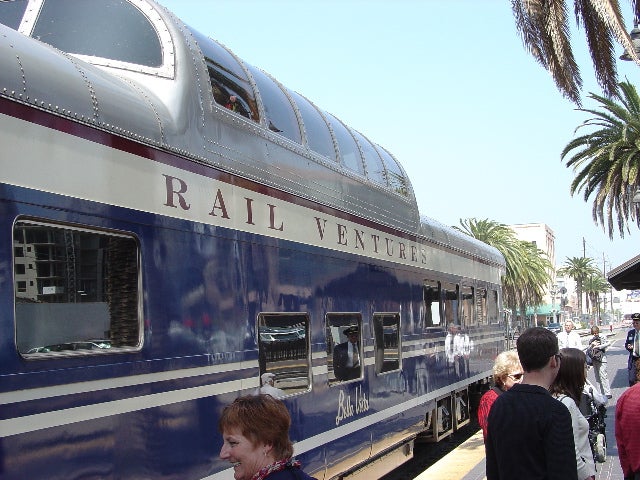
 OPPOsaurus WRX
> ttyymmnn
OPPOsaurus WRX
> ttyymmnn
07/15/2016 at 17:33 |
|
Space